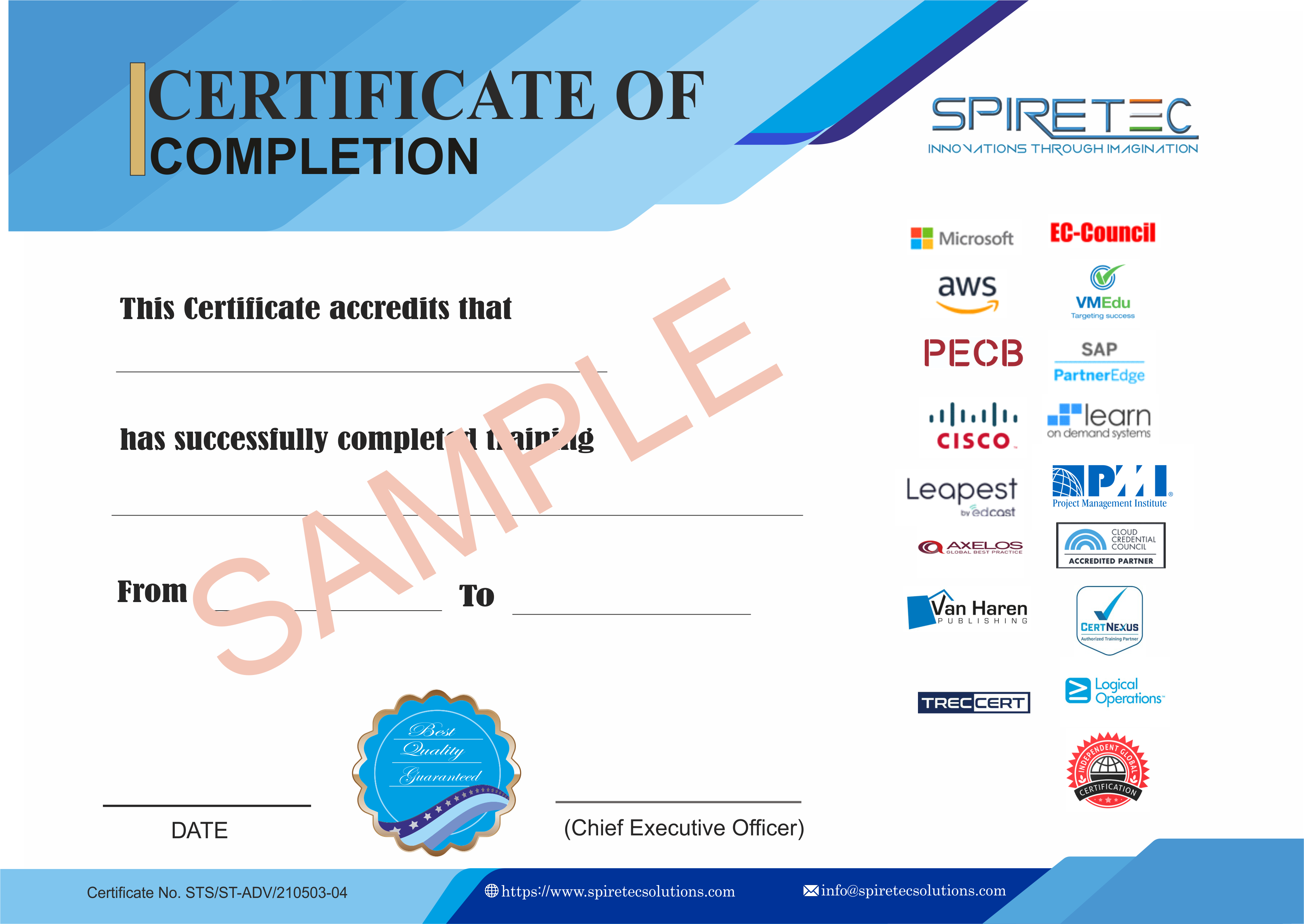The SC - 100 : Microsoft Cybersecurity Architect course is an in-depth training program designed to equip learners with the skills necessary to design and implement a robust cybersecurity architecture within their organizations. As a Microsoft cybersecurity architect, you translate a cybersecurity strategy into capabilities that protect the assets, business, and operations of an organization. You design, guide the implementation of, and maintain security solutions that follow Zero Trust principles and best practices, including security strategies for identity, devices, data, AI, applications, network, infrastructure, and DevOps. Plus, you design solutions for Governance and Risk Compliance (GRC), security operations, and security posture management.
As a cybersecurity architect, you continuously collaborate with leaders and practitioners in security, privacy, engineering, and other roles across an organization to plan and implement a cybersecurity strategy that meets the business needs of an organization. This comprehensive course ensures that learners emerge with the capability to architect and oversee a strong cybersecurity framework, addressing current and evolving threats and compliance needs.
Audience Profile:
This course is designed for experienced cloud security engineers who have previously obtained a certification in the Microsoft Security, Compliance, and Identity (SCI) portfolio. Participants should have advanced experience in key areas of security engineering, including identity and access management, platform protection, security operations, data security, and application security. Experience with both hybrid and cloud implementations is essential. For beginners, the SC-900: Microsoft Security, Compliance, and Identity Fundamentals course is recommended.
At Course Completion:
After completing this course, students will be able to:
-
Design a Zero Trust strategy and architecture.
-
Evaluate Governance, Risk, and Compliance (GRC) technical strategies and security operations strategies.
-
Design security for infrastructure.
-
Design a strategy for data and applications security.
Prerequisites:
Before attending this course, students should have:
-
Passed an associate-level certification in the Security, Compliance, and Identity portfolio (e.g., AZ-500, SC-200, SC-300).
-
Advanced knowledge in identity and access, platform protection, security operations, data security, and application security.
-
Experience with hybrid and cloud implementations.
Course Outline:
Module 1: Introduction to Zero Trust and Best Practice Frameworks
-
Understand best practices for cybersecurity architecture.
-
Learn about Zero Trust and its role in modernizing cybersecurity.
-
Explore best practice frameworks such as MCRA, CAF, and WAF.
Module 2: Design Solutions Aligned with CAF and WAF
Module 3: Design Solutions Aligned with MCRA and MCSB
Module 4: Design a Resiliency Strategy for Cyberthreats
-
Address common threats like ransomware.
-
Design secure backup and restore solutions.
-
Manage security updates for business resiliency.
Module 5: Case Study: Security Best Practices and Priorities
Module 6: Design Solutions for Regulatory Compliance
Module 7: Design Solutions for Identity and Access Management
-
Design cloud, hybrid, and multicloud access strategies.
-
Develop solutions for Azure Active Directory, external identities, and authentication/authorization strategies.
-
Manage secrets, keys, and certificates.
Module 8: Design Solutions for Securing Privileged Access
-
Understand privileged access and the Enterprise Access Model.
-
Design identity governance and secure administration solutions.
-
Address cloud infrastructure entitlement management.
Module 9: Design Solutions for Security Operations
-
Develop security operations capabilities across hybrid and multicloud environments.
-
Implement centralized logging, SIEM solutions, and security workflows.
-
Use MITRE ATT&CK for threat detection.
Module 10: Case Study: Security Operations, Identity, and Compliance
-
Analyze requirements and technical capabilities.
-
Design integrated solutions for security operations, identity, and compliance.
Module 11: Design Solutions for Securing Microsoft 365
Module 12: Design Solutions for Securing Applications
-
Assess security posture and threats to applications.
-
Implement lifecycle strategies for application security and API management.
-
Secure application development processes.
Module 13: Design Solutions for Securing Data
Module 14: Case Study: Security Solutions for Applications and Data
Module 15: Specify Requirements for SaaS, PaaS, and IaaS Services
-
Define security baselines for various cloud service models.
-
Address IoT, web workloads, and container security.
Module 16: Design Solutions for Security Posture Management
Module 17: Design Solutions for Securing Endpoints
-
Specify security requirements for servers, mobile devices, and IoT.
-
Design solutions for OT and ICS security using Microsoft Defender for IoT.
Module 18: Design Solutions for Network Security
Module 19: Case Study: Security Solutions for Infrastructure







 Live Online Training (Duration : 32 Hours)
Live Online Training (Duration : 32 Hours)
